
Growing potatoes in sacks or grow bags isn’t anything new under the sun. Yet, we’ve never tried it, and we didn’t know anyone who ever has. Until now.
Let’s just say it wasn’t a disaster, though it wasn’t a great success either. In other words, our potato sack harvest wasn’t anything to boast about on social media. Perhaps we chose the wrong kind of bag, or the several-month summer drought took its toll. Maybe a vacation in the middle of the growing season was better for us than it was for the spuds. That’s life.
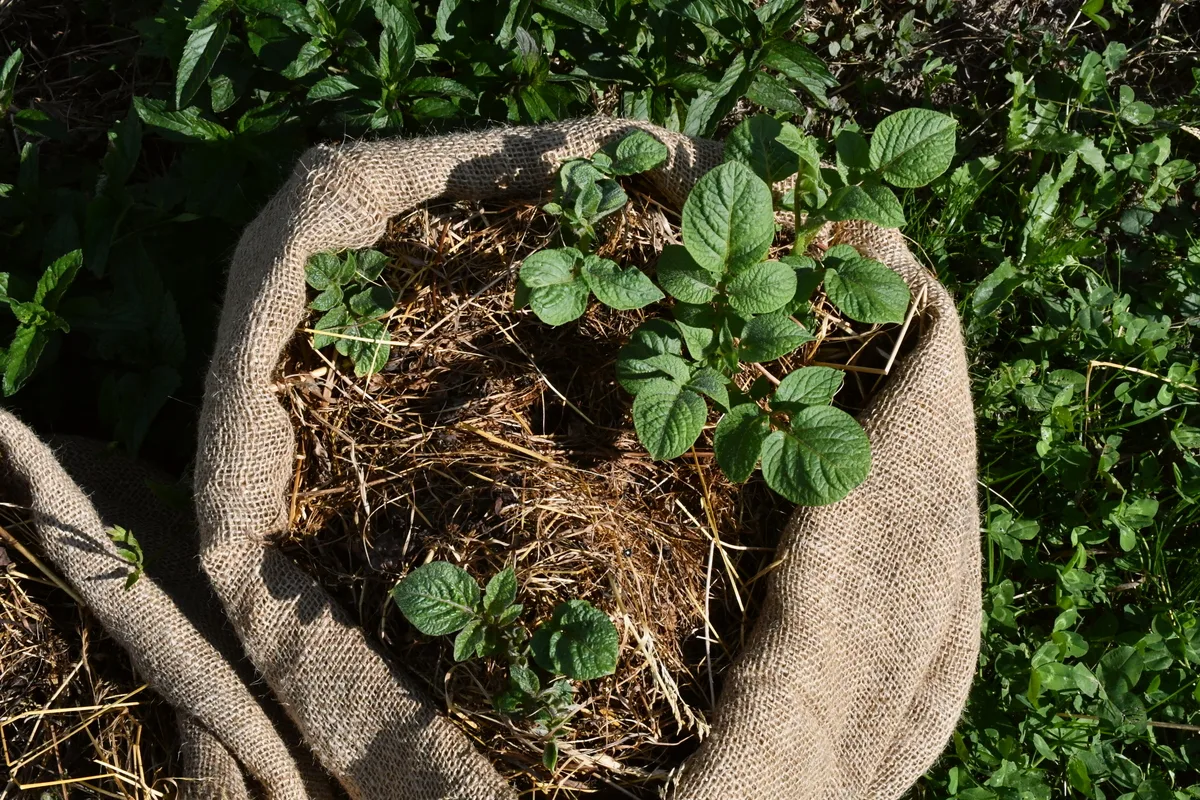
In the end, we were rewarded with a small harvest from each sack. Was it worth it? You can skip the tutorial and head straight to the bottom, “Is it worth growing potatoes in sacks?” if you simply need to know the answer right now.
However, if you can find the time, read all the way through and make an informed decision on your own. You’ll find tips and tricks along the way to make the potato harvest even easier and more successful for you.
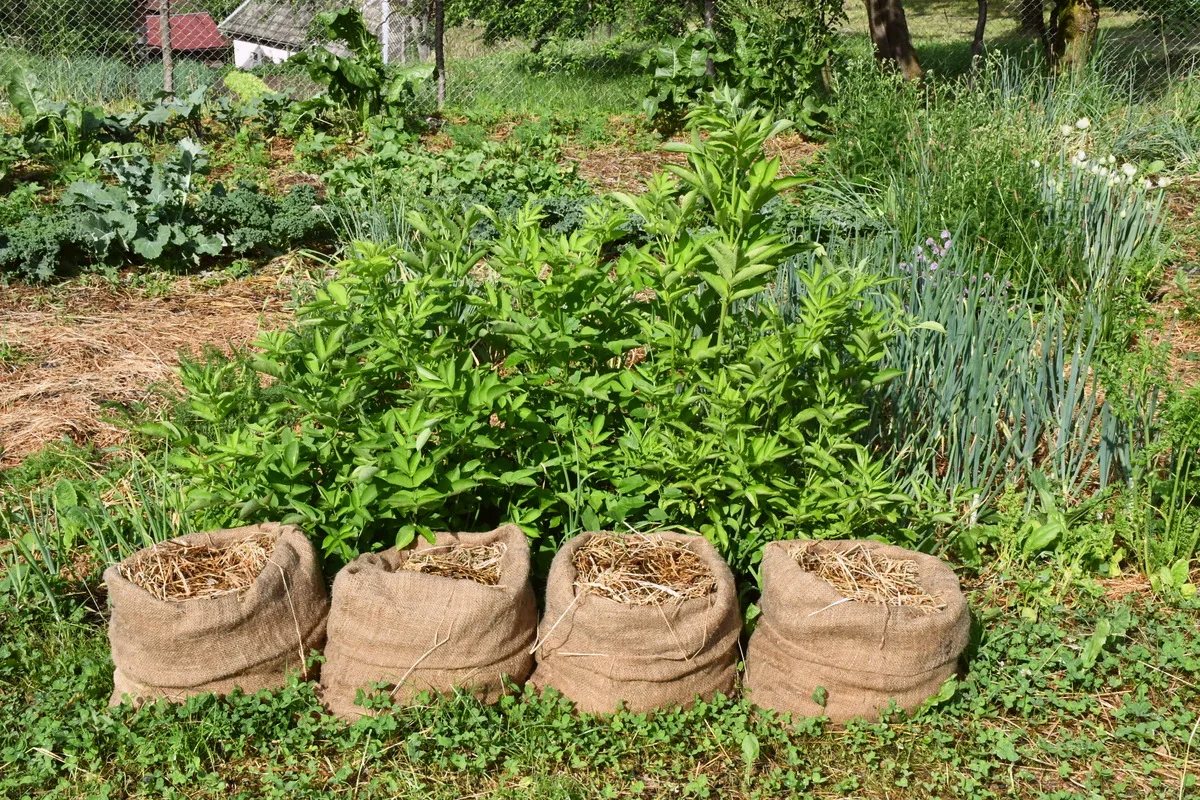
Benefits of Growing Potatoes in Sacks
First of all, why would anyone plant potatoes in bags?
Our thinking was this: we only wanted to grow a small amount as a trial next to our no-dig garden. Naturally, we didn’t want to turn the soil, so planting in sacks sounded like a good idea.
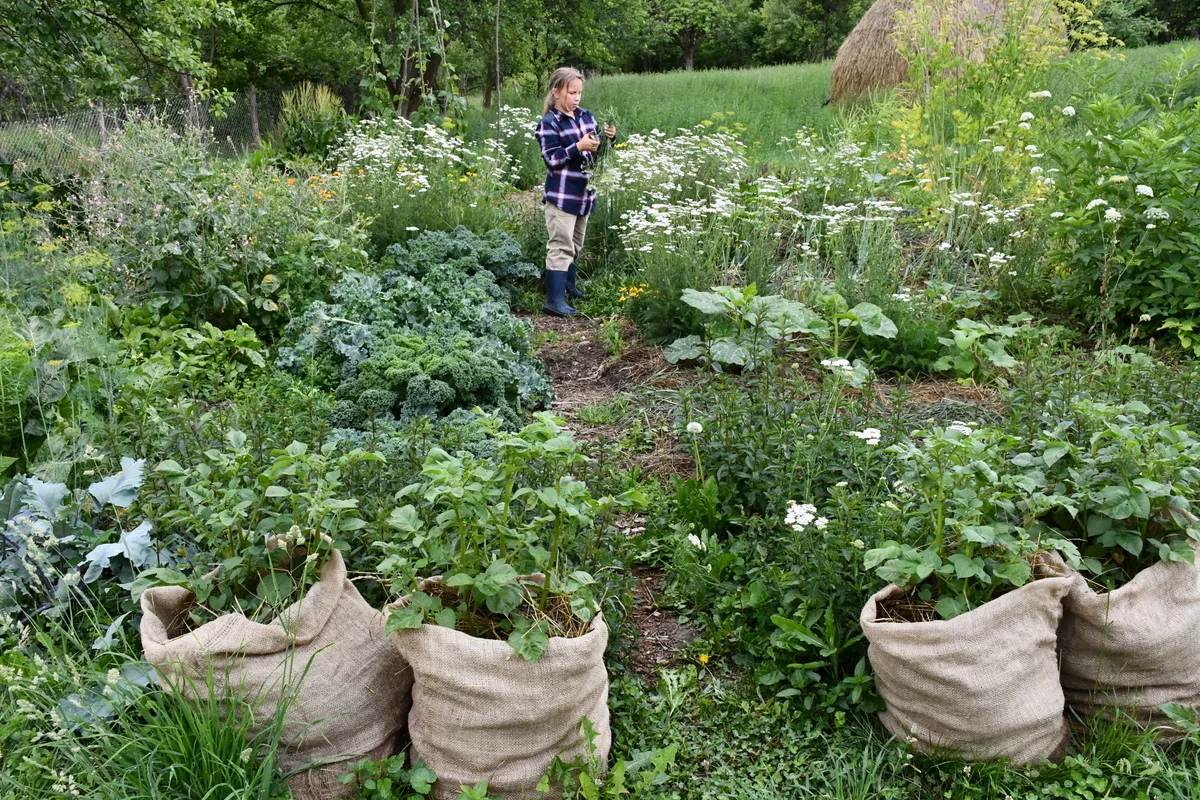
Your reasons for growing potatoes in sacks may be different, though; let’s examine a few of them:
- container gardening saves space
- few to no weeds in sacks
- doesn’t disturb the soil
- germinates faster
- easy to harvest
Growing potatoes in containers is a lazy gardener’s dream. Plant. Water. Fertilize. Add more mulch. Harvest.
Okay, maybe it’s not quite as uncomplicated as that, but it’s not so difficult either.
Planting Potatoes in Sacks
If you have a small plot for growing food, container gardening is a practical choice.
With the right container, such as a bucket or barrel, you can even grow potatoes on a deck or balcony. For our purposes of growing potatoes, we choose to use jute sacks. Do not make that same choice that we did.
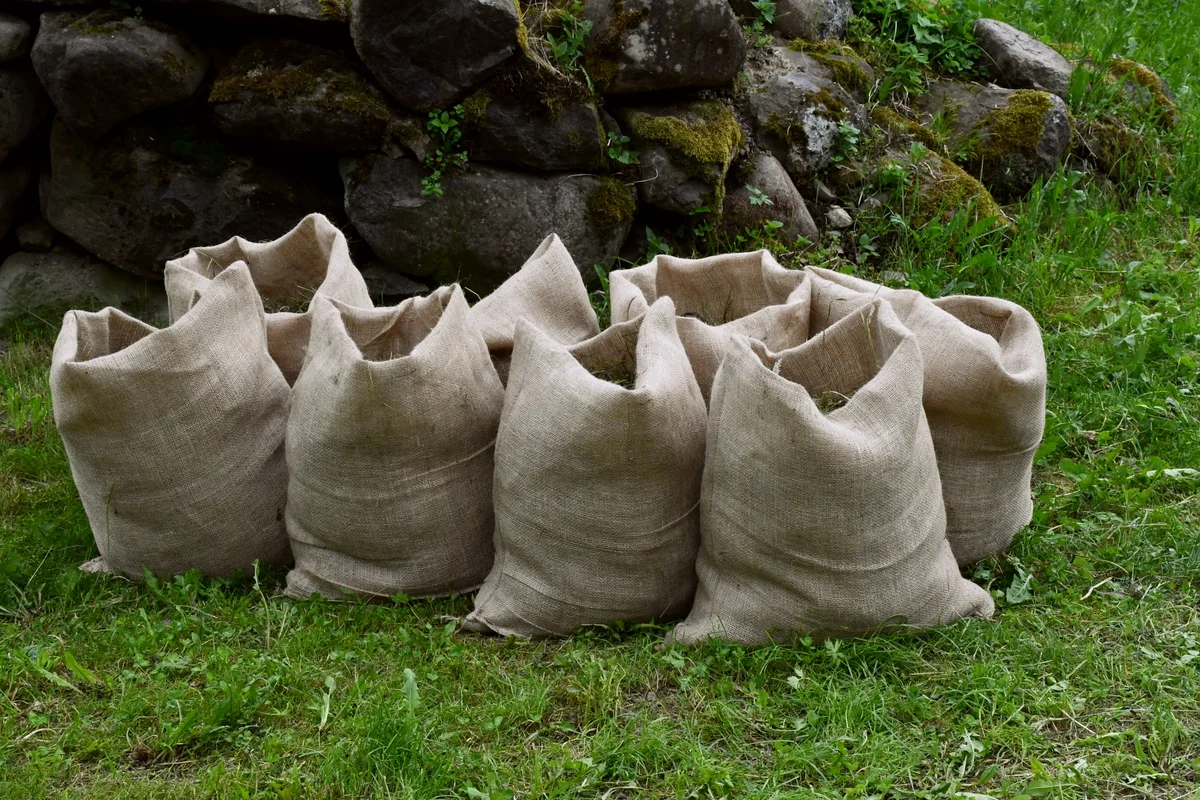
Our thinking was that it was natural and should hold up in the garden.
Our potatoes were planted late in May and harvested in late September. By the end of July, it was obvious that the sacks were deteriorating rapidly. At harvest time, all we had to do was lift it off the garden floor and examine the contents, the bottom was completely gone.
This means that the potatoes, on the plus side, benefited greatly from the rain which came after the drought simply by sitting on top of the soil. One could say it was a happy accident.
Choosing sacks (or other containers) to plant in.
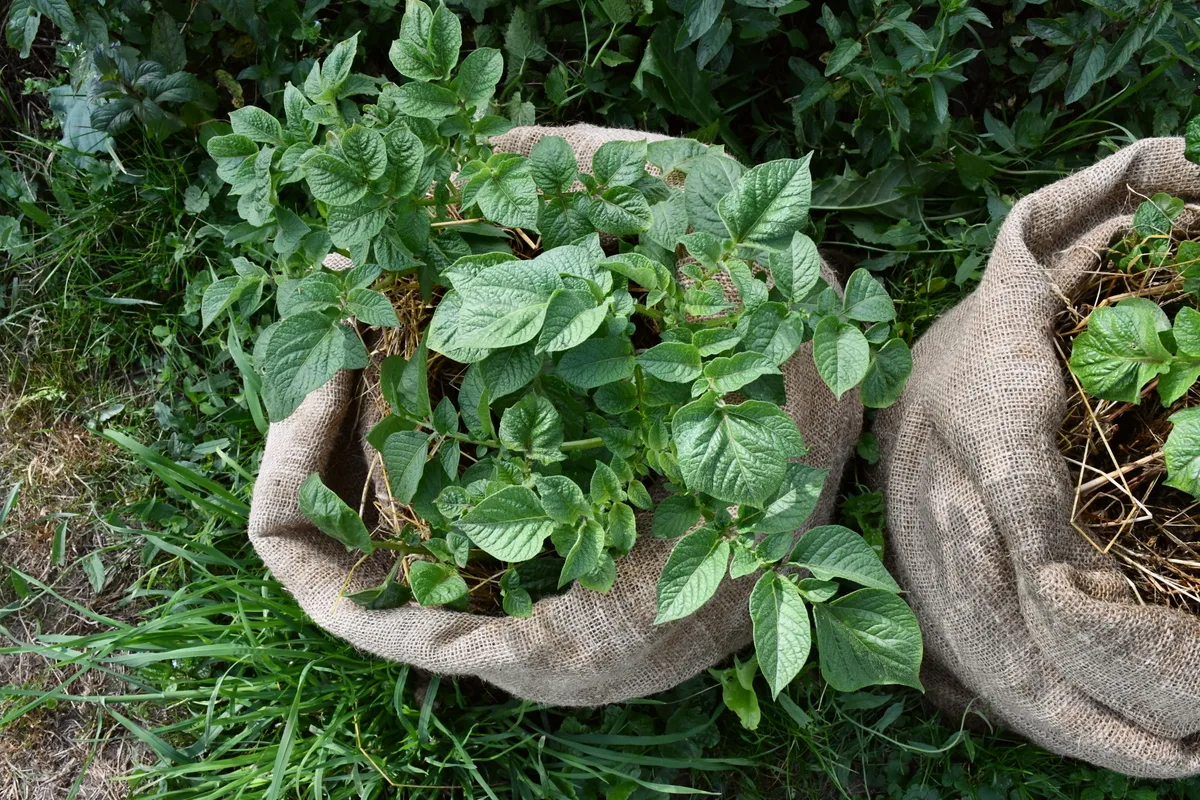
Would we choose jute sacks to plant in again? Absolutely not.
But that doesn’t make the concept of planting in sacks or containers useless. For gardeners without a lot of horizontal room to grow, or if you have no access to the ground at all, growing potatoes in containers makes good sense.
Why not try the following containers instead:
All you have to do is make sure they have plenty of drainage holes so the compost does not become waterlogged.
Another benefit of the containers on the list above is that won’t rot in one season.
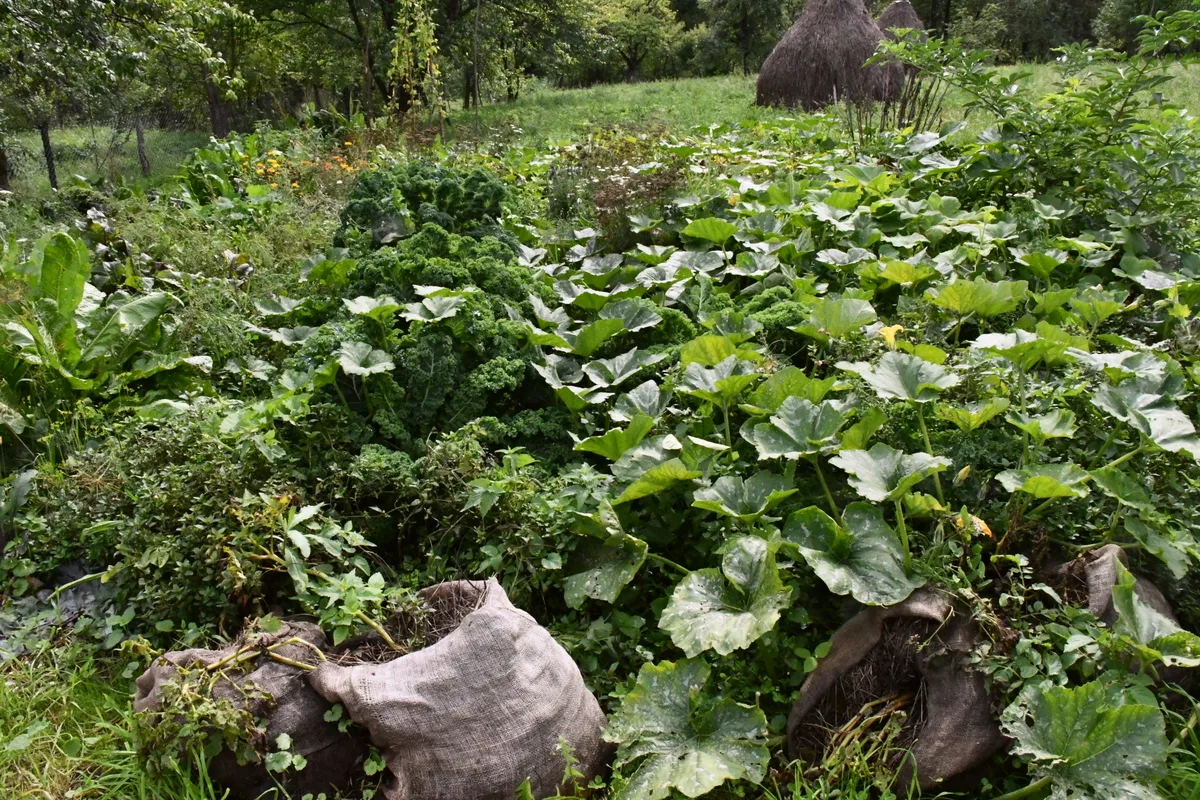
No matter what container you choose, you need to be sure to exclude light from reaching the tubers (that’s what causes greening of the potatoes). And be sure the containers are large enough; 5-10 gallons should be sufficient.
Related reading: 21 Genius Ideas For Growing Sacks Of Potatoes In Tiny Spaces
Choosing chitted potatoes, mulch and compost.
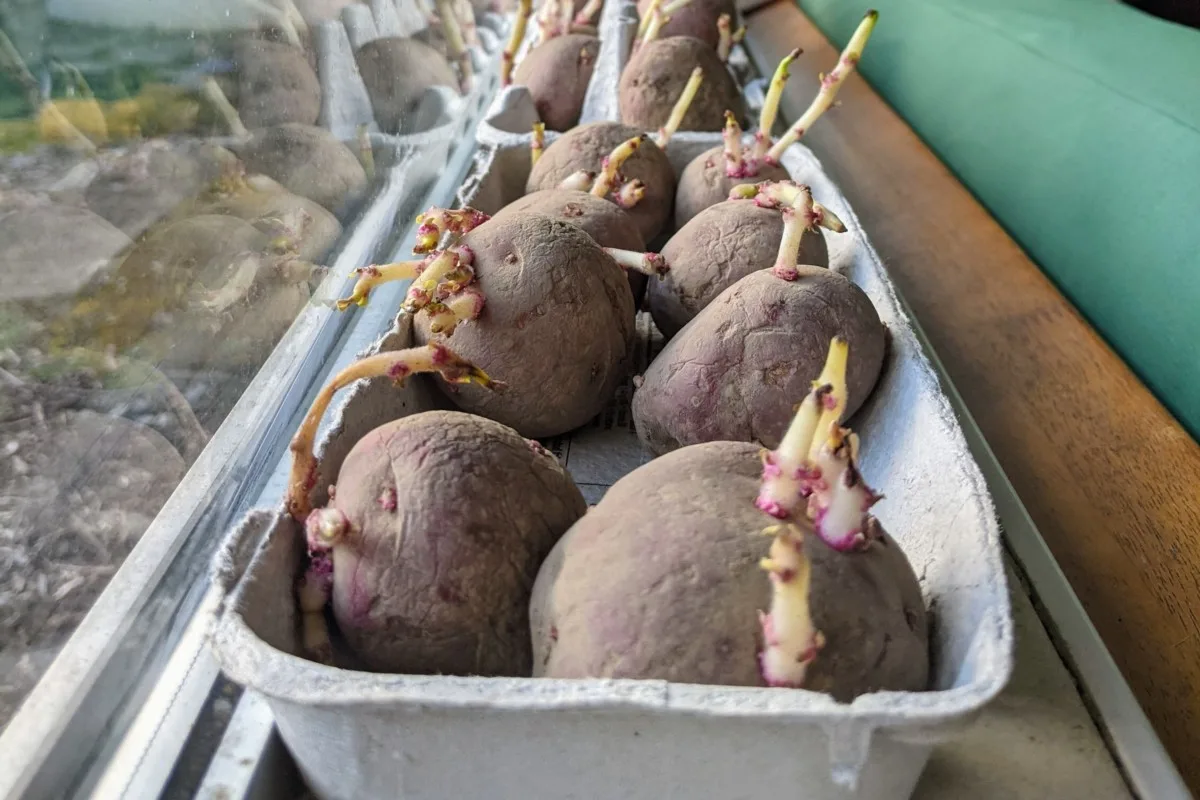
To chit or not to chit, that is the often asked question. I do believe it helps to sprout potatoes before planting them in the ground or in sacks. It gives them the head start they need to emerge from the soil.
Sprouts from seed potatoes should emerge 2-4 weeks after planting. You’ll need to coordinate planting time with the weather when the soil reaches 40 °F or more, and all danger of frost has passed.
Mulch may not be necessary if you are using a plastic pot, but if you are trying to grow food in a sack, it helps cut down on some of the weight. We’ve used hay because it is abundant where we live. You can use any other mulch you like, even grass clippings, to help fill the bottom and sides of the sack. Later, it will also come in useful when you need to re-stuff the bags.
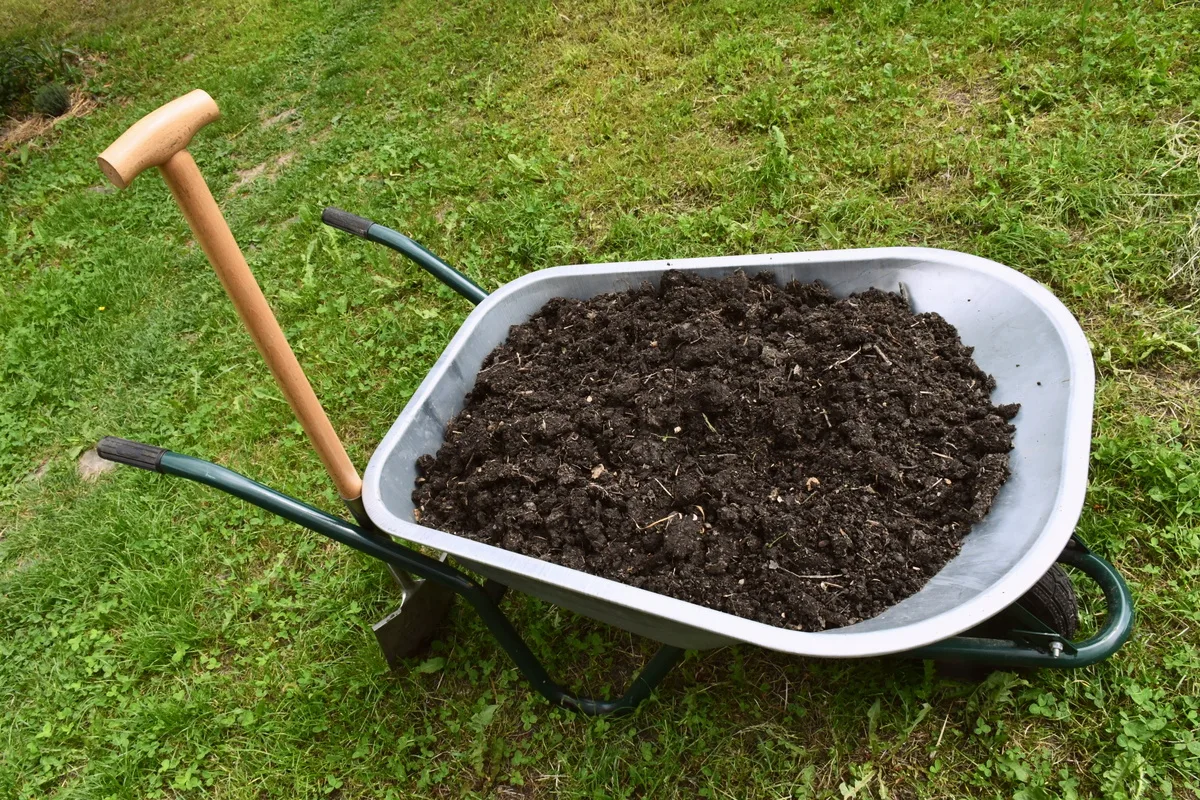
Then, there is the matter of potting soil or compost. Both work equally well. Again, use what you have. You’ll need enough to fill as many sacks as you wish to plant. I wish I could be more exact, but all measures are approximate here.
Planting Potatoes in Sacks
Once you have your sacks, or containers ready, it’s time to plant.
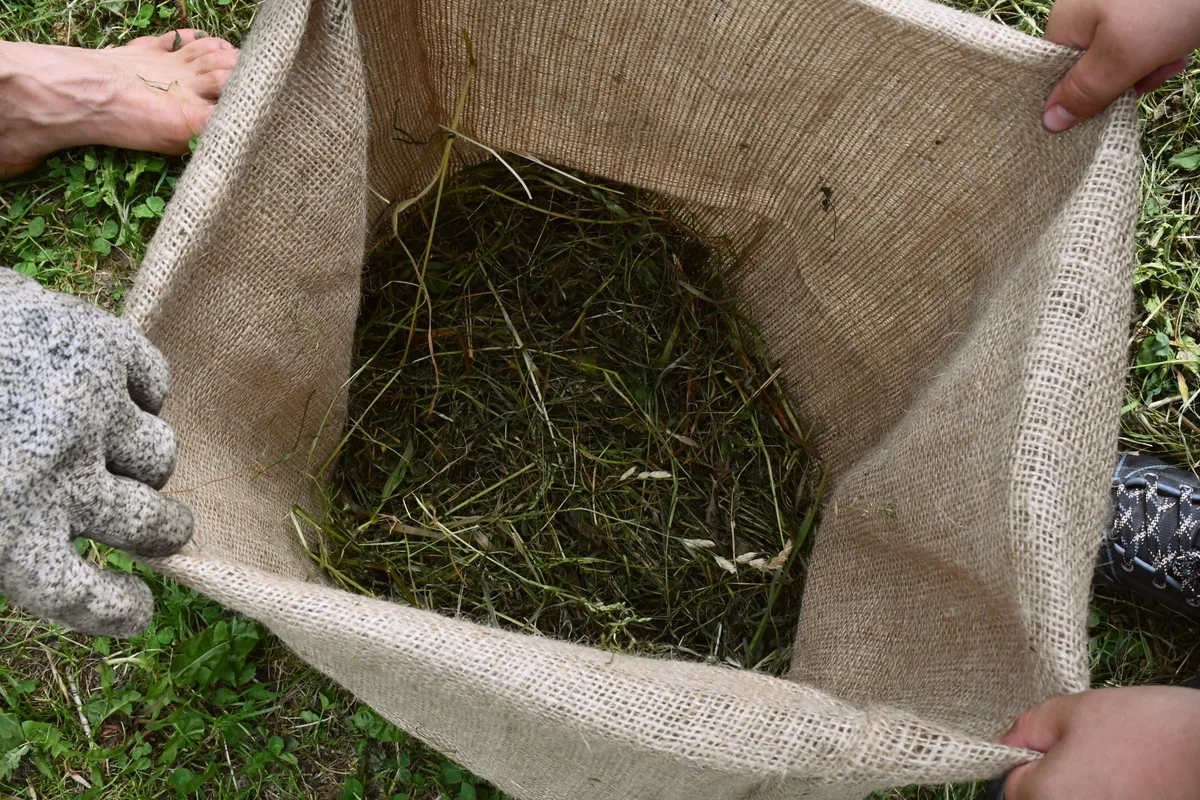
Line the bottom of the sack with a layer of mulch.
Then add a generous amount of compost or potting soil.
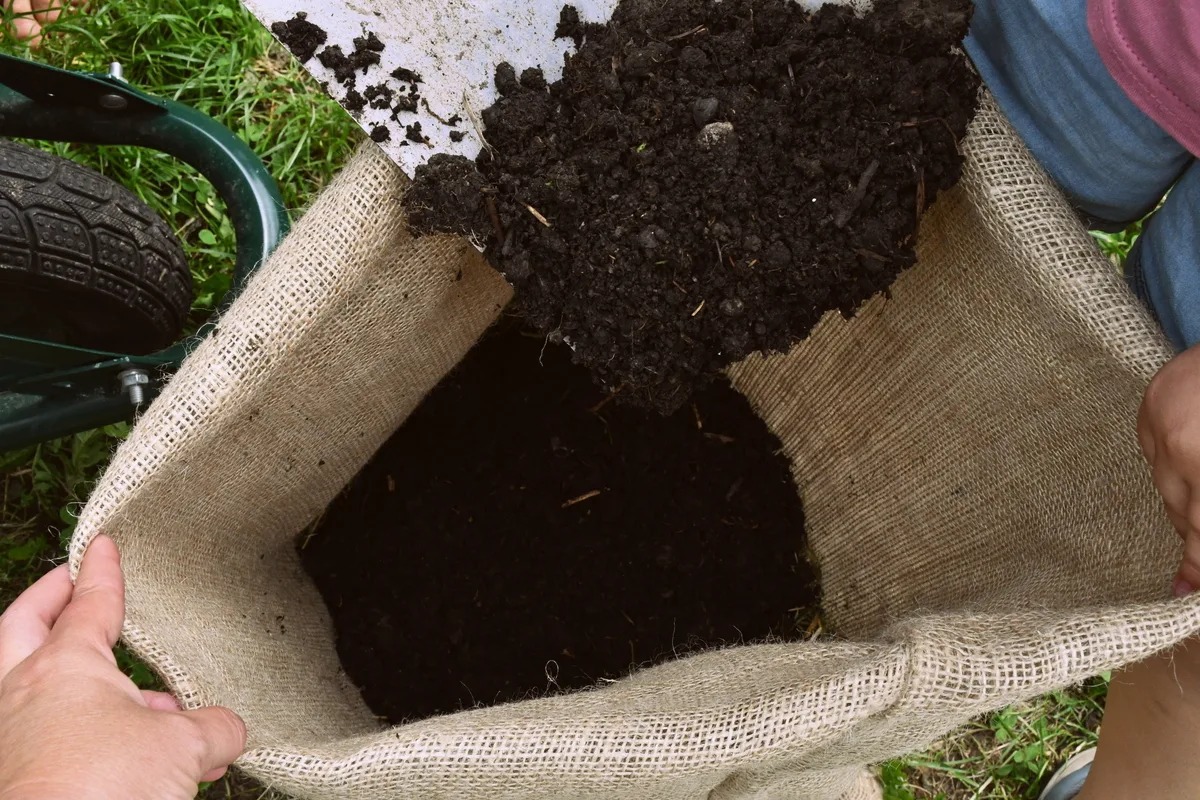
It’s easy enough so far, right?
Next, set your chitted potatoes on the compost and cover them with more of the good stuff.
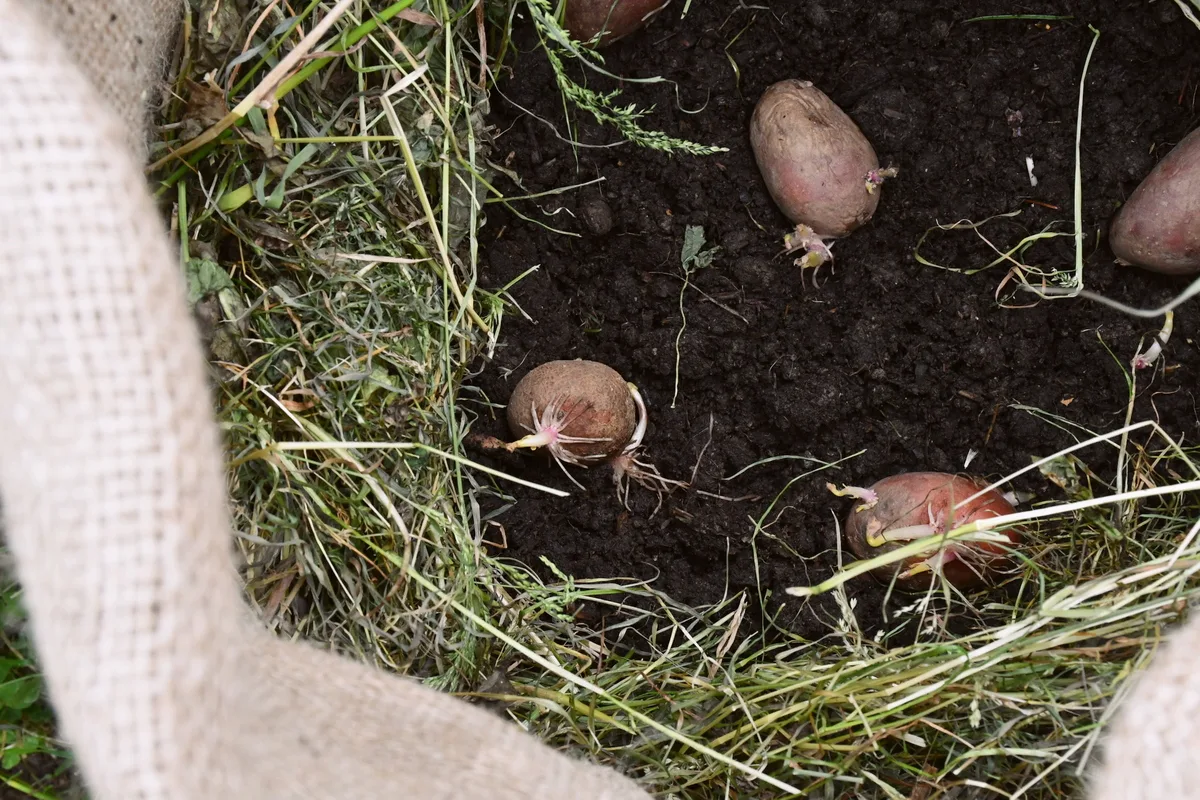
At the same time, you can use extra mulch to line the sack. This not only gives the sack some shape but also helps to block out the sun. Just as any potato would expect in the ground.
All that’s left to do is place them into the garden-scape, in full sun and let those tubers grow.
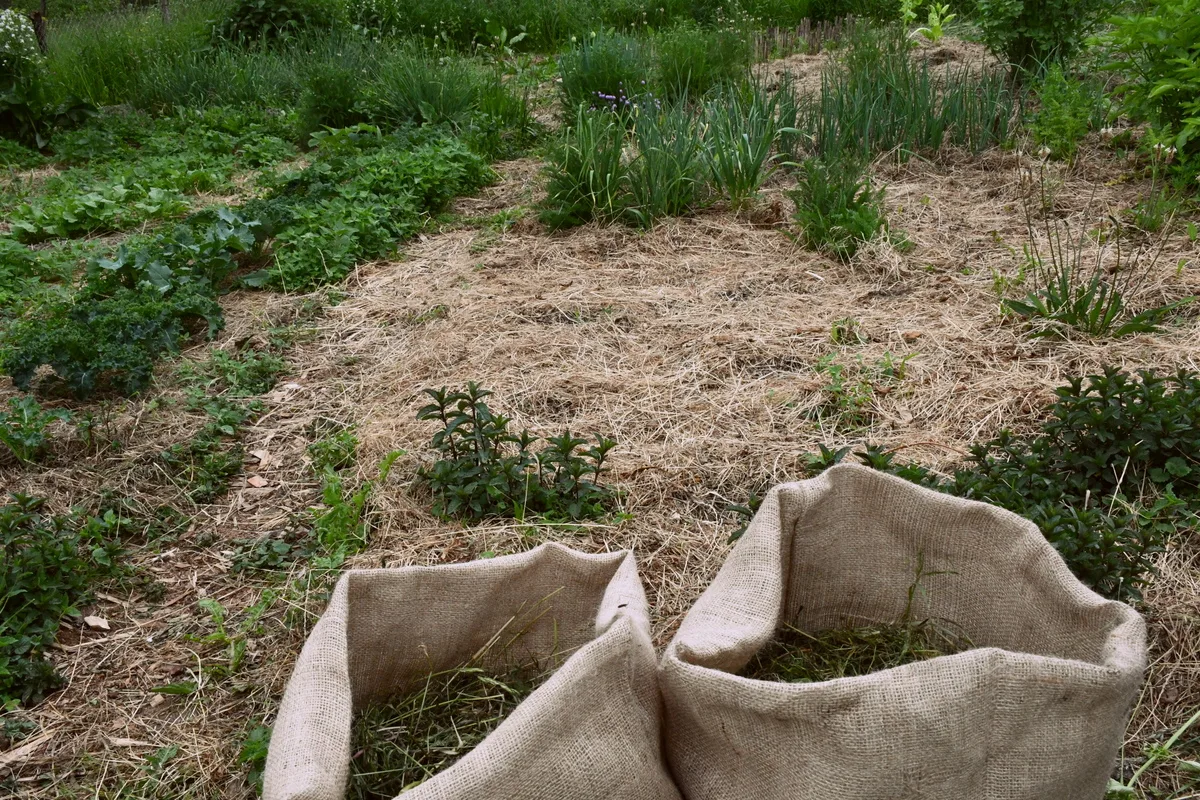
How often to water potatoes in sacks?
In an ideal situation, the soil surrounding potatoes never dries out completely. At the same time, they should never be waterlogged. During rainy days and weeks, you won’t need to water them at all.
In times of drought, every 2-3 days is recommended.
Keep in mind that sacks have the tendency to dry out faster than pots, crates or raised beds. So, you might end up watering your potatoes a lot more than expected.
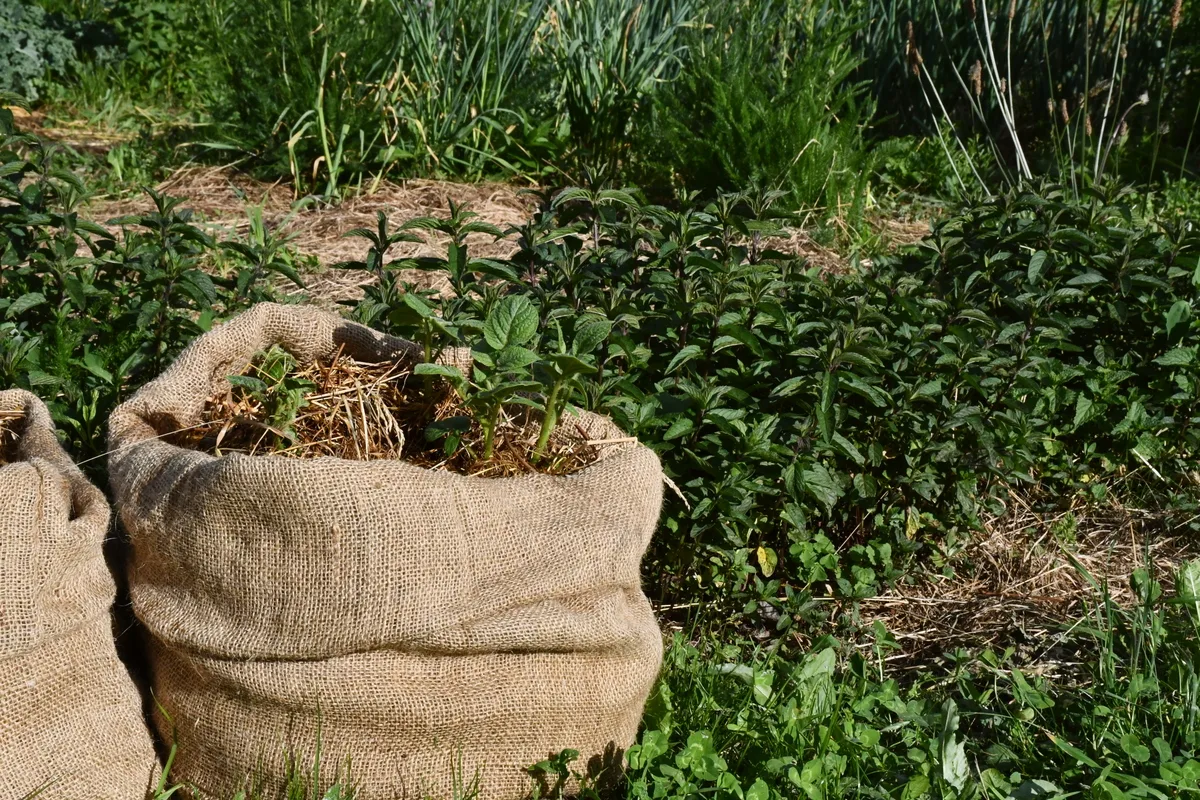
Fertilizing your potatoes is a must.
Because potted plants don’t have a connection with the soil, you’ll want to fertilize them before they flower. This year we made a nettle fertilizer, which we also used on our pumpkins and cabbages with great success.
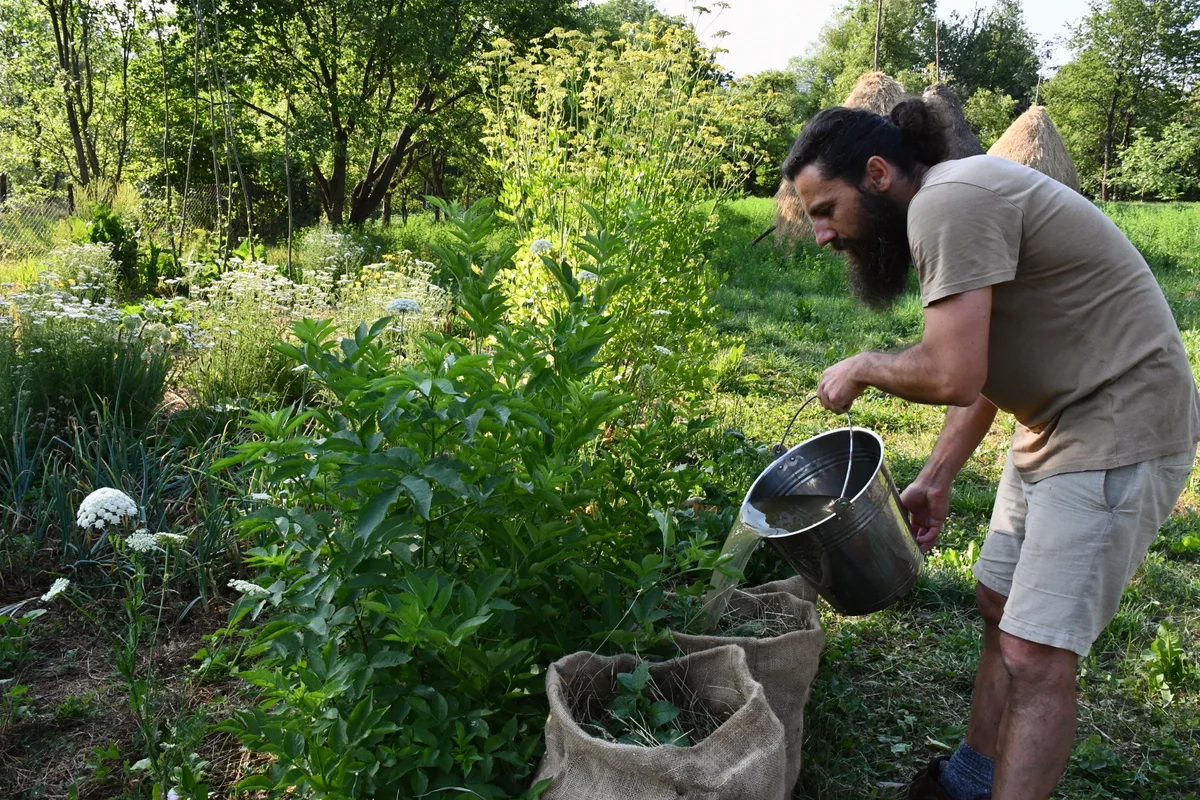
Growing and waiting for potatoes to grow.
As you can see, there is nothing difficult about growing potatoes.
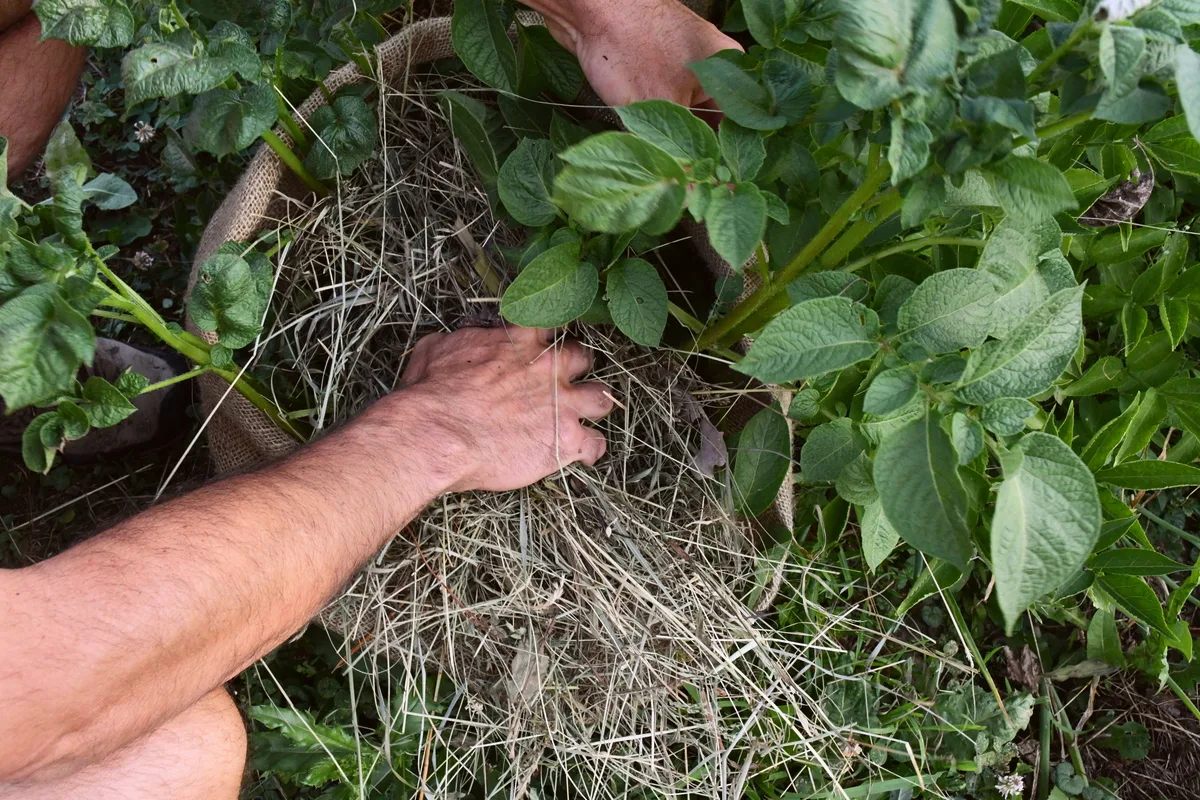
Before they get leggy and ready to flower, however, it may be necessary to add more mulch to the sack to prevent them from falling over. If you have more compost, they’d be even happier with that.
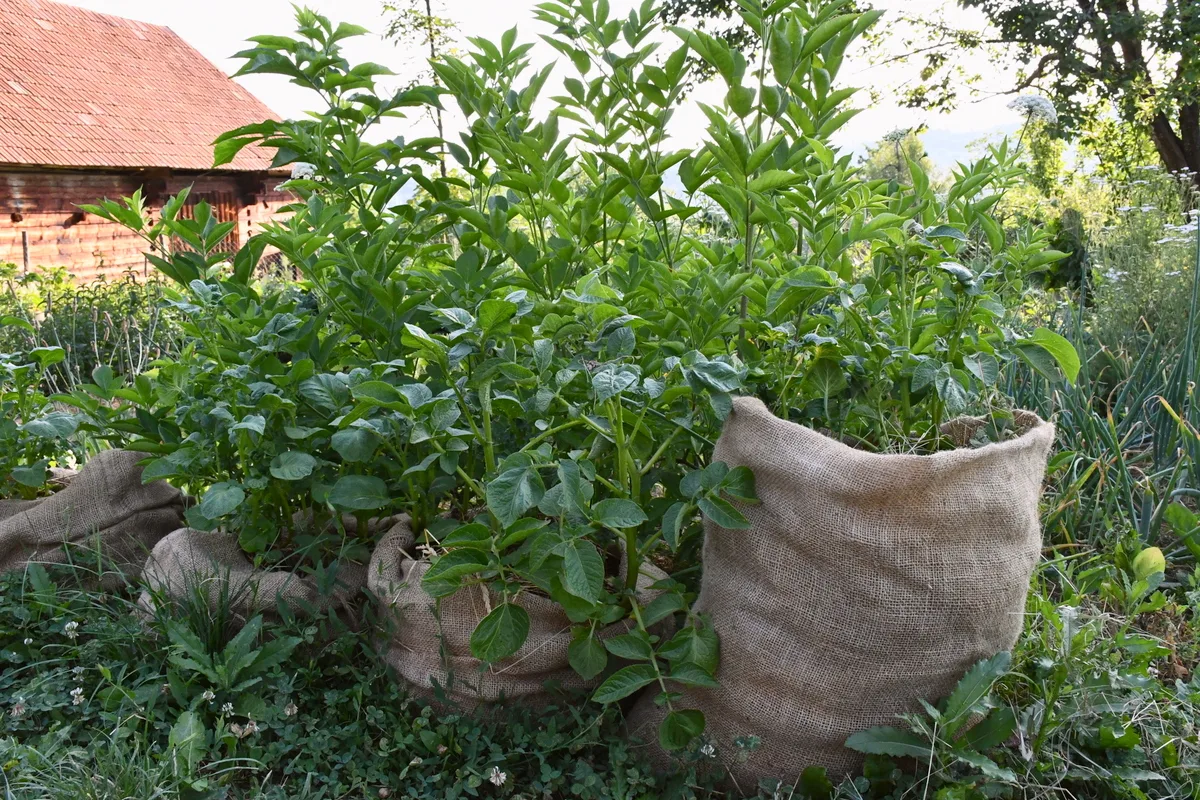
In the meantime, you’ll also want to keep an eye out for both larvae and adult potato beetles. In years past, we’ve had plenty. This year, not a single one.
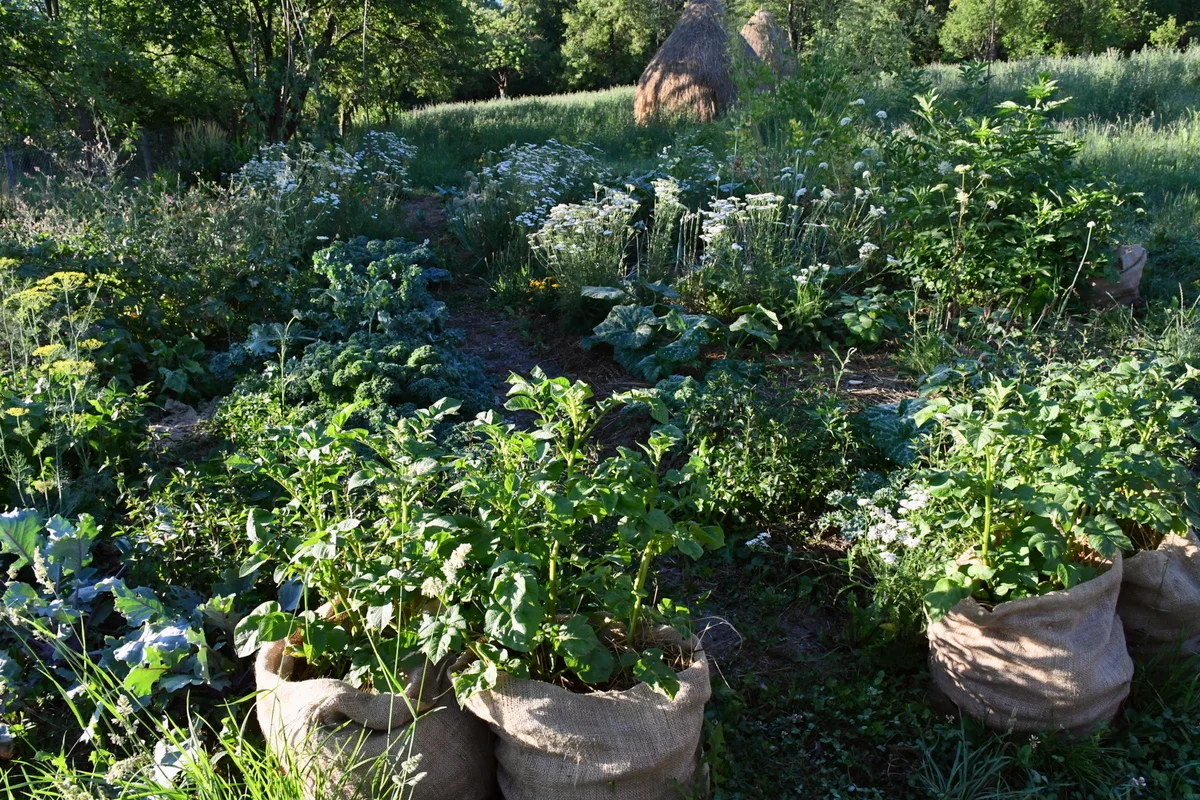
Harvesting Potatoes From Sacks
As you can see, our jute sacks completely rotted out from the bottom. In a way, it was a good thing, as it allowed the tubers to reach the garden soil, though it wasn’t our intention from the start.
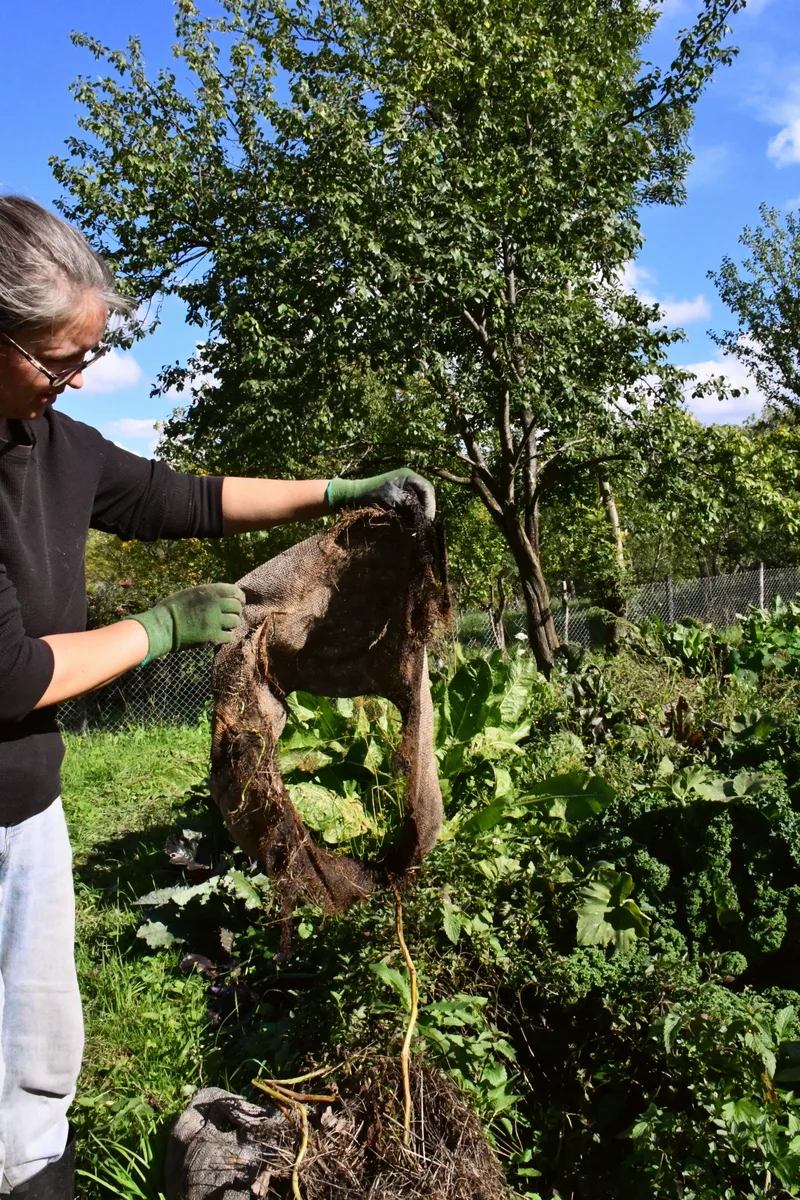
If you have a solid container, it’s said that you can dump out the contents.
In our case, we still didn’t have to dig for anything since the tubers were sitting on the compost, on top of the soil.
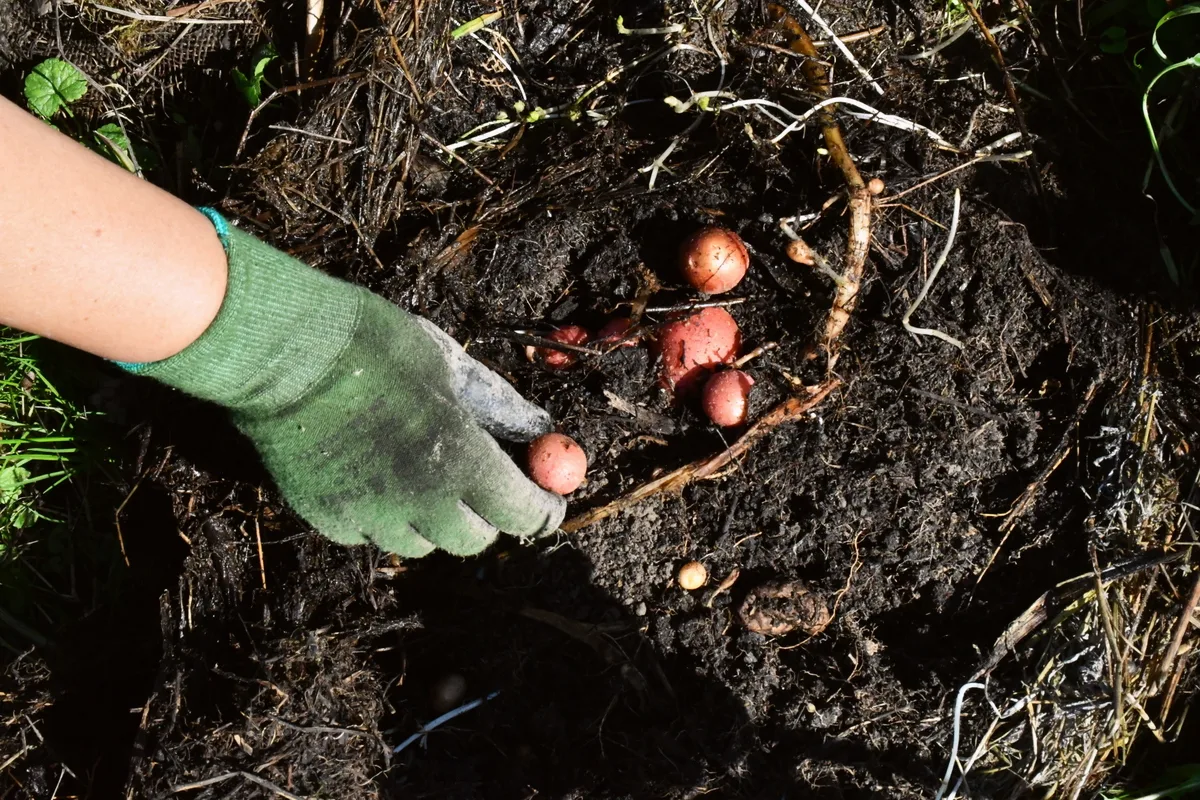
All we had to do, was pick them by hand.
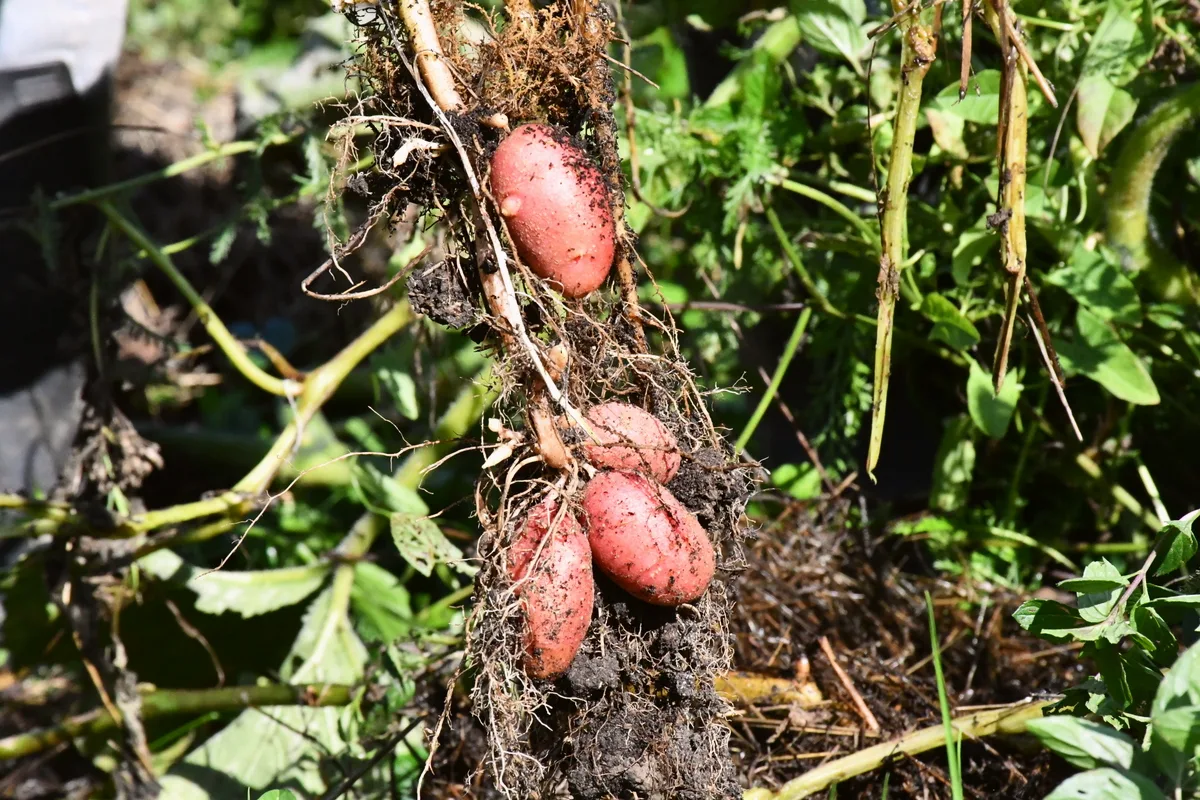
If by some luck of nature, you happen to receive a bumper crop of potatoes, Lydia has an informative article on how to store potatoes so they last for months.
What we harvested from four sacks, the three of us ate in two meals.
To Grow or Not To Grow in Plastic?
Not everyone has the same concerns about growing in plastic. That being said, we all know from experience that thin plastic breaks down quickly, especially when it is exposed to outside elements of sun, wind and rain. As opposed to hemp or jute, which eventually becomes soil, plastic breaks down into smaller and smaller synthetic waste particles, depending on the material.
Then there is the question of food-safe plastics. Do you feel good about growing food in a potentially toxic environment? It’s definitely something worth looking into.
What about tires? Food, or drinking water for your livestock, should never be grown or kept in tires; recycle those responsibly.
Another thing to consider is that sacks are usually one-time use anyway. Whereas quality grow bags, pots and barrels can survive for several seasons.
When making the choice to grow potatoes in something other than the ground, consider how many years you might want to try it out. This will help you make a better-informed container choice.
Is it worth growing potatoes in sacks?
This really depends on your garden and who you are as a gardener. It also matters how much you adore potatoes. If you love them a lot, then sure, you’ll find every way to plant them close to home.
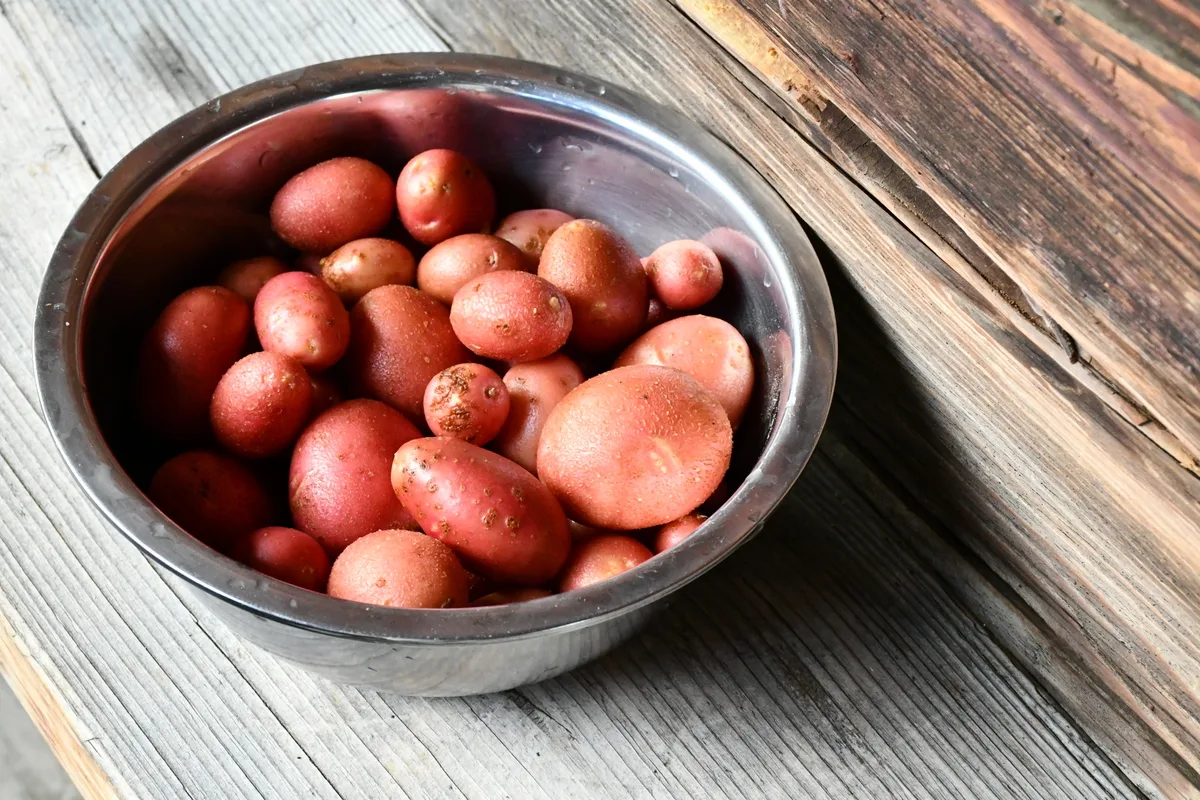
In our situation, potatoes are relatively cheap since everyone grows them, though they aren’t all organic. So, it’s a toss-up. Some years we grow them; other years, it’s not worth the effort.
When it comes down to it, if you have sufficient land, mulching potatoes is definitely the way to go. If not, container planting it is.
If you can find the value in it (it doesn’t have to be monetary, especially when it comes to homegrown food), then naturally, it is worth doing.
What do you think? Are you ready to give it a try?

Get the famous Rural Sprout newsletter delivered to your inbox.
Including Sunday ramblings from our editor, Tracey, as well as “What’s Up Wednesday” our roundup of what’s in season and new article updates and alerts.

